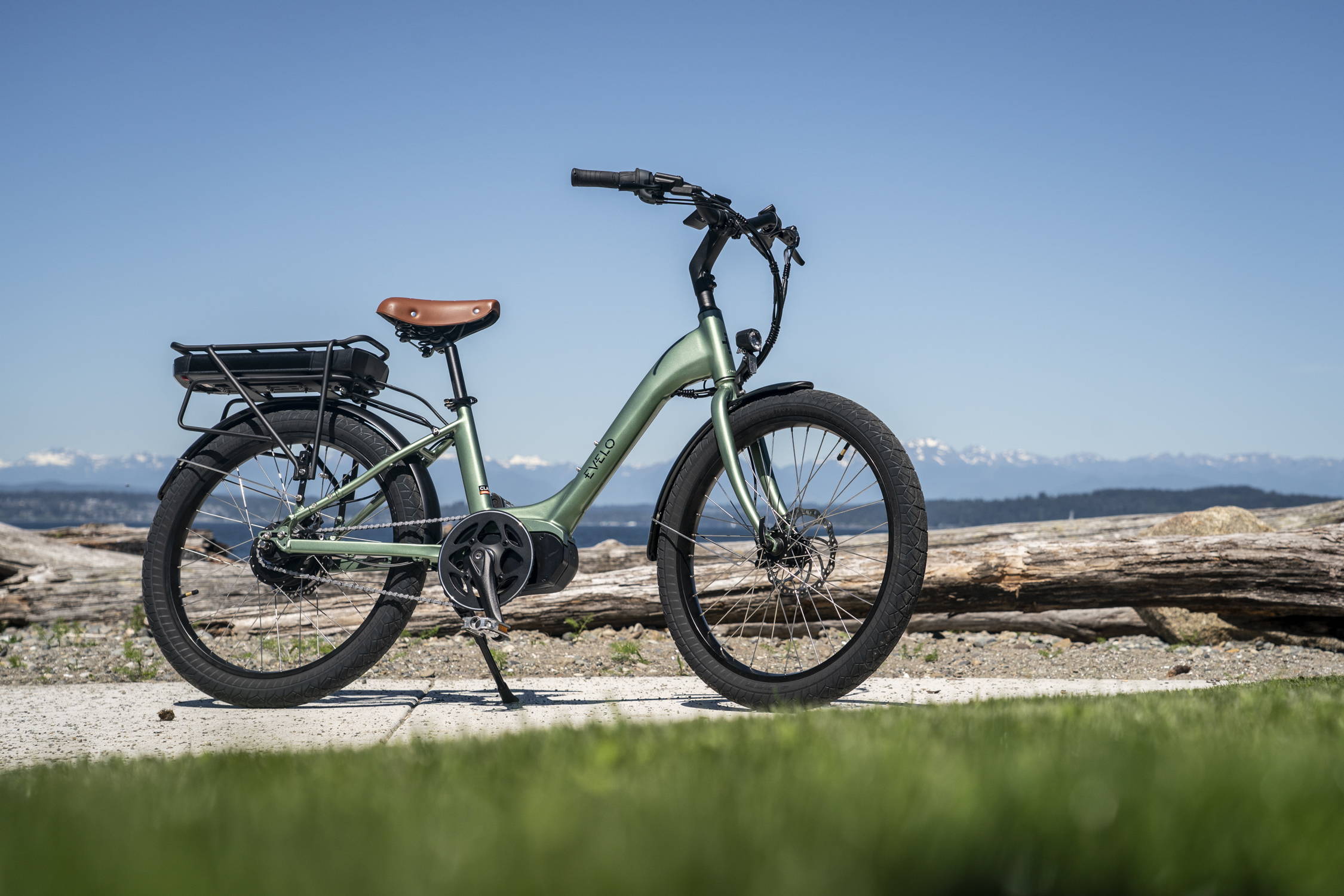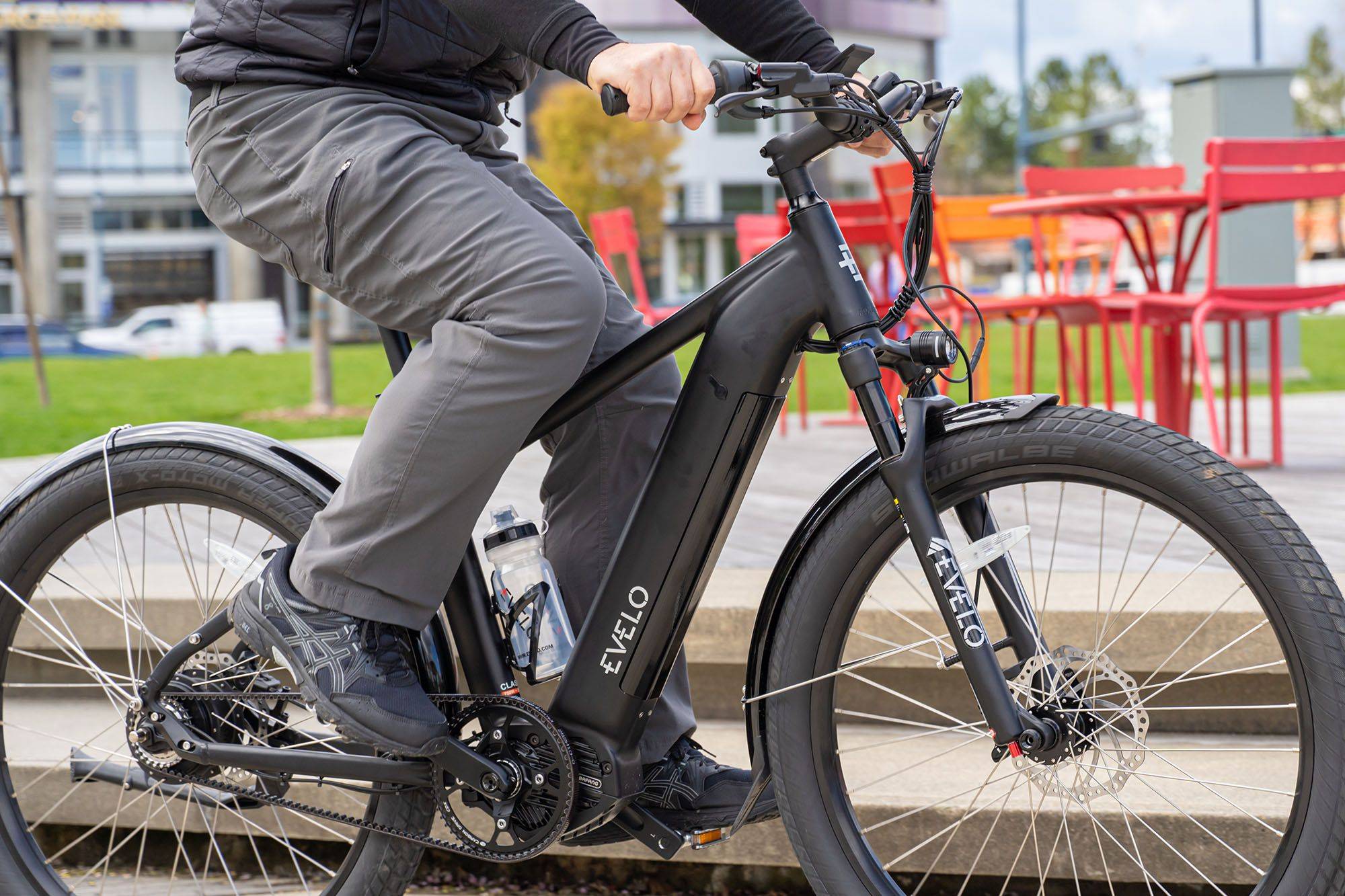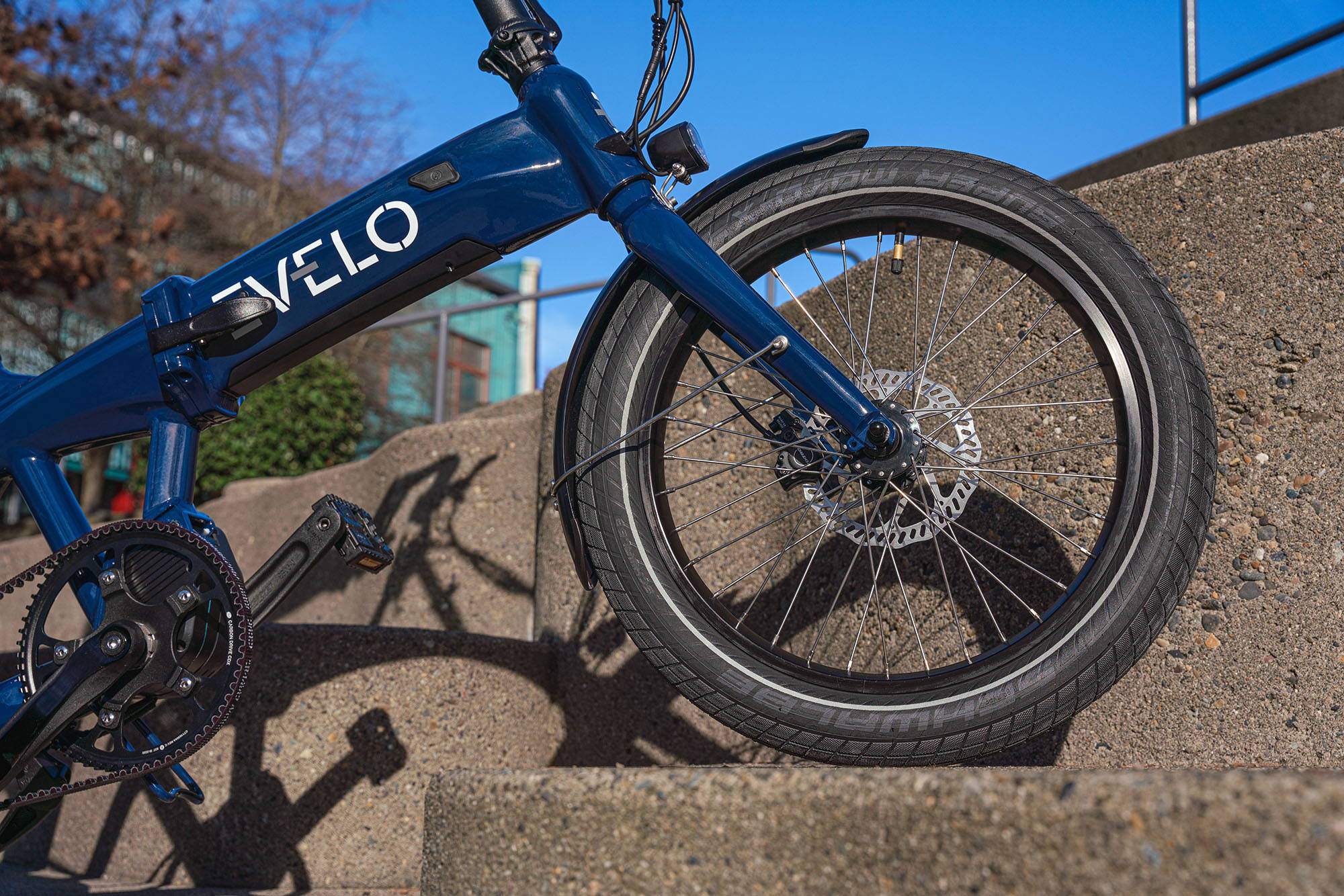EVELO Battery Systems


Fully Integrated Frame Batteries
Some EVELO models feature a fully integrated frame battery. These batteries are completely hidden in the frame, and are completely removable for charging both on and off the bike itself.
Integrated frame batteries provide large capacity with minimal weight, and offer a smooth, clean aesthetic.

Rear Rack Batteries
Rear rack batteries still offer some advantages for many riders. Placing the battery in a rear rack over the rear wheel allows our engineers to design the lowest step through frame possible, making it as easy as possible to get on and off of certain models.
This battery configuration is also the go to for battery add-ons, allowing for use of both the in frame battery, and the rear rack battery, effectively doubling the range on applicable models.

eBike Battery Brands
Brand names are the first topic of discussion when it comes to batteries. While everyone is comfortable with household brand names like Samsung and Panasonic, these companies also make lower grade batteries. Li-Ion batteries are graded, generally A-C, which is a generalized guide referencing overall power, capacity, and lifespan.
Brand names are the first topic of discussion when it comes to batteries. While everyone is comfortable with household brand names like Samsung and Panasonic, these companies also make lower grade batteries. Li-Ion batteries are graded, generally A-C, which is a generalized guide referencing overall power, capacity, and lifespan.

Longevity & Care
A quality Li-Ion eBike battery should last 4+ years with regular use. Riding your bicycle often, or at least once in a while is your best bet to make sure your battery has a long and happy life.
If you plan to store your bike for an extended period, we recommend fully charging your battery and removing it from the bicycle for long term storage. Top off your charge every 3 months to ensure it stays healthy on the shelf.

Capacity & Specifications
You’ll see a few terms when researching batteries, which will be Voltage, Amp Hours, Watt Hours, and Range. These are the four main factors to consider when comparing different batteries.
You’ll see a few terms when researching batteries, which will be Voltage, Amp Hours, Watt Hours, and Range. These are the four main factors to consider when comparing different batteries.
Voltage
This is the force at which electricity travels. To use a garden hose as an analogy, this is how far the stream of water sprays out of the hose. For eBikes, 36-48 Volts is the sweet spot for bikes ranging from 350-750 watts. 24 Volt systems are a bit antiquated, and 52V+ systems are generally reserved for higher power or performance applications. We don’t want a trickle, but we also don’t want a fire hose
Amp Hour
This is a rating of how long a battery will last under a one Amp load, or a set amount of resistance. The higher the Amp Hour rating, the longer the battery will last.
Watt Hours
This is voltage multiplied by Amp Hours, which is a representation of the overall capacity of a battery - and is the best way to compare different voltage cells. A 36V 13.4AH battery is 482 Watt Hours, and a 48V 10AH battery is 480 Watt Hours. The 36V battery will offer longer range but lower power and speed, while the 48V battery will have more power and speed, but offer less range, but they both have the same amount of potential energy inside.
Range
Range specifications can also be a tricky subject, as you will see the same size battery rated for vastly different mileage from one company to the next. It may be physically possible to put 100 miles on a 10AH battery, but for most folks it’s just unrealistic. Keep an eye on these numbers as well, as some companies will stretch the truth in order to make their products seem more attractive at a lower price point.
FAQs
Find Your Perfect Electric Bike.In less than 3-Minutes
Answer a few quick questions and we'll instantly recommend the best eBike for you. Get custom recommendations based on your answers and needs.



